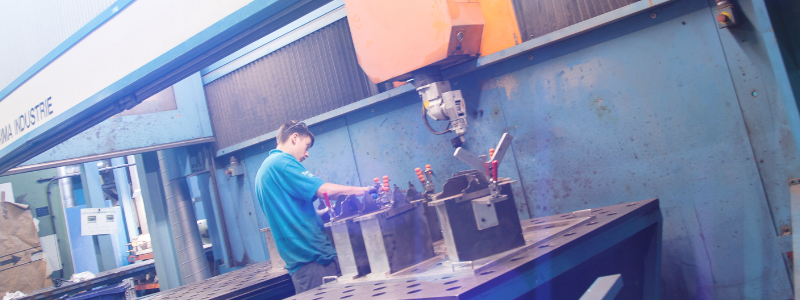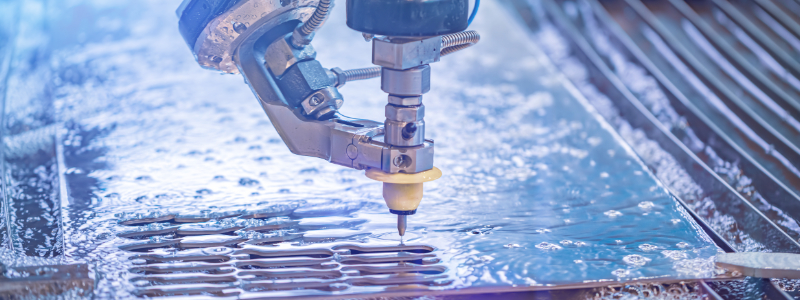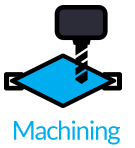Laser Cutting vs Water Jet Cutting
Tooling 2000 | 27th August 2020

Five-Axis Laser Cutting Machine
In the manufacturing industry, you will encounter two primary methods for cutting materials. These are laser cutting and waterjet cutting. Both options provide a versatile option, but this often depends on the type of material you work with, as well as specific demands of the project. Today, we will analyse the difference between the two and identify where they are most suitable.
Laser Cutting
Laser cutting is a process that uses gas energy, including CO2, that is transmitted via a beam and controlled through mirrors. It is suitable for a wide variety of materials and applications and provides both precision and safety, which are crucial components and considered priorities when engaging in any cutting endeavour.
Waterjet Cutting
Waterjet cutting machines operate differently to 3D laser cutting alternatives. As the name suggests, they rely on pressurised water along with abrasives, such as aluminium oxide, to enhance cutting. The result is similar to natural erosion, only on an accelerated scale. While a laser cutter machine contains all the parts in one place, waterjet cutting will often have the device and the source separate.
What Can They Offer?
Precision cutting is a popular method that is used in a variety of sectors, including the Automotive Industry and the Medical Industry. Both processes offer a wide range of applications, and many consider laser cutting to be a method that complements waterjet procedures. However, you will find that laser machines, especially in the case of flatbed laser cutting, can offer slightly more diversity, making them suitable options in their own right.
Both machines will deliver precision and optimal safety levels, protecting the staff and materials during the process. With laser cutting, you are also guaranteed exceptional accuracy, with the laser capable of reaching 0.006”, whereas waterjet cutting machines can only achieve 0.02”. It can also work with a more comprehensive range of materials, including plastics and wood, as well as having the ability to engrave materials, which is not possible with waterjet machines.
It’s also useful to consider risk and wastage. This is where laser cutting machines shine, as they are very low risk because of the precision. This minimises the chance of waste or mistakes, which gives you more confidence when using them. Conversely, waterjets are loud and come with a lot of cutting waste, while the area itself gets messy and cluttered, which could be a safety issue.
What About the Cost?
As with any service, it is vital to consider the pricing and cost when deciding which is the right process for you. If you compare the cost of laser cutting and waterjet cutting, you will find that laser cutting is more affordable than waterjet cutting, which is something that could sway you towards laser cutting.
Get in Touch Today
As the use of a laser cutting machine is suitable for a diverse number of materials, working with Tooling 2000, a leader in the laser cutting industry, is an excellent solution for the majority of your material and manufacturing needs. If your business requires laser cutting, don’t hesitate to get in touch with us on +44 (0) 121 242 2000, or email us at office@tooling2000.co.uk for more information.

Water Jet Cutting



